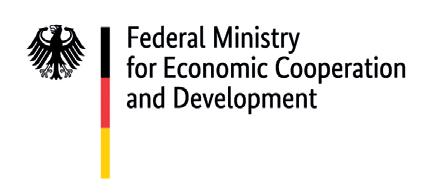RISKS
• Map existing and emerging climate-related physical risks, by identifying vulnerabilities of exposed communities and assets to extreme weather events and their financial implications for the economy and for the public finances: identify potential for extreme weather events, their severity and frequency; identify households, businesses or sub national governments potentially exposed; assess their capacity to absorb the losses and damages through savings, borrowing or insurance coverage and any financial vulnerabilities that may emerge.
• Clearly distinguish between explicit and implicit contingent liabilities, consider second-order effects, such as reve nue loss and prepare through explicit ex ante arrangements for cost-sharing, financial support and compensation.
• Estimate the potential fiscal impact, including explicit and implicit contingent liabilities and revenue effects, using available measurement methods (direct estimates, probabilistic modelling, stress test and sensitivity analysis).
• Integrate climate risk for government into fiscal risks assessments through long-term fiscal sustainability analysis.
• Identify national capacities for gathering the relevant data to better understand climate-related physical risks, gaps and ways to bridge those gaps.
• Identify and disclose funding and financial plans for managing climate risks, including how residual risk is addressed, either through the budget reporting process or as part of the fiscal risks management strategy.

1.1 Identifying and assessing climate-related risks, financial vulnerabilities, and financial implications for goverment
climate risks
• Assess risk reduction investments through decision support tools such as cost-benefit and cost-effectiveness analysis.
• Integrate climate risk in public investment management to promote climate-resilient projects, including a whole-oflife (i.e. capital, operating expenditure, decommissioning) cost assessment to capture adaptation benefits.
• Extend the timeframe on public sector discount rates to create incentives for integrating adaptation measures to reflect the long-term resilience benefits of public investments and factor them fully into project appraisals.
• Integrate resilience considerations and use public procurement strategically to increase the resilience of procured goods, services and public works. Levy the use of existing infrastructure and services, such as electricity, drinking water and transport, to fund future resilience activities, such as the relocation of assets.
• Leverage risk reduction and climate adaptation financing through thematic bond markets.

Promoting, investing and financing risk prevention, risk reduction and adaptation to reduce exposure and vulnerability
1.2 Mitigate financial losses from
and their implications for governments
• Raise awareness of the climate-related physical risks that households and businesses face.
• Evaluate the overall availability and affordability of insurance coverage for potential climate-related hazards and identify any segments of society that could be left uninsured and financially vulnerable.

• Support the availability of affordable insurance through insurance regulation, by leveraging international reinsurance markets and encouraging take-up.
• Consider the potential contribution of catastrophe risk insurance programmes to broadening the availability of affordable insurance coverage while managing potential fiscal risks.
• Support access to insurance for vulnerable segments of society.
• Assess the potential impact of climate change on the future availability of affordable insurance coverage.
• Promote cost-sharing of impacts to help subnational governments through well-designed cost-sharing mechanisms, by defining clear and explicit reimbursement conditions (e.g. eligibility criteria) for disaster-related costs and setting transparent ceilings on financial assistance to provide incentives to subnational governments to manage residual risk.
• Promote cost-sharing mechanisms between subnational governments and communities, such as through targeted rates on property, to ensure that that revenue is gathered from those directly benefiting from resilience investment (and removes any future risk of moral hazard).
• Ensure the availability of basic compensation and post-disaster financing to reduce economic/social hardship.
• Provide clarity on scope, level of support, eligibility and ceilings for financial assistance arrangements.
Aligning incentives across levels of government
Ensuring clarity in public financial assistance arrangements for households and businesses to mitigate future financial losses
Protecting households and businesses through insurance and access to credit
Assessing budgetary capacities to fund relief, recovery and reconstruction, including through budget reallocation

• Develop integrated government financial strategies, coordinated with fiscal risk assessment, that take into account the funding needed, when that funding is needed, as well the relative costs and benefits of different approaches (risk reduction and climate adaptation, risk retention, risk financing, risk transfer).
• As a starting point, consider government capacity to manage climate-related financial risks facing the public sector within the budgetary and fiscal framework, for instance through possible contingency reserves or budgetary reallocations. Dedicated reserve funds, in which funds are accumulated over time, may be established to meet disaster costs.
• Contingency reserves: Governments with budgetary flexibility and capacity should set up contingency provisions in their budget to absorb high-frequency but low-severity climate-related events (e.g. localised floods and droughts) and cover immediate disaster relief and response needs.
• Reserve funds: For relatively high-severity, low-frequency climate disasters, reserve funds would be more appropriate than general contingency reserve; depending on ease and cost of access to public debt financing.
The amount of funds set aside for climate-related contingent liabilities should be determined based on climate risk assessment and estimates of annualised cost.

Contingency and reserve funds should be designed to maximise speed of access.
• Budget reallocations: Budgetary frameworks for emergencies should allow for the rapid reallocation of funds to cover immediate post-disaster funding needs. Legislative authorities should be informed of reallocations even if their approval is not required. The executive branch should regularly report on the overall impact of reallocations to the legislature.
Assessing debt market borrowing capacities, including speed of access
• Assess capacity to meet funding needs through public debt financing markets:
• Debt financing can be an efficient source of financing for governments with low borrowing costs and robust access to international bond markets.
• Debt financing might not be a viable option for countries with low credit standing or limited access to international bond markets.
• For countries facing high-levels of climate risk, debt financing costs may increase as climate risk is incorporated into credit ratings and credit models.
1.3 Prepare integrated multipronged government financial strategies
• Where there is limited fiscal and/or debt financing capacity or other financing constraints, such as speed of debt market access or debt sustainability, consider other financial tools to ensure sufficient resources for responding to climate risks, including official finance, reserve funds, commercial lending and risk transfer.

• Governments with pre-arranged access to official financing should aim to maximise such financing to meet funding needs that cannot be efficiently met through contingency and reserve funds.
• Reserve funds can support risk retention and fiscal response capacity.
• Commercial bank credit arrangements may be an option for countries that do not have the capacity to access international bond markets.
• Risk transfer to insurance or capital markets can provide secure funding, particularly for countries facing credit market constraints. This form of funding will be more cost-efficient where risks are first pooled and if coverage is calibrated to less frequent payouts (i.e. more severe events).
Optimising financial tools under budgetary and financing constraints, within integrated frameworks of disaster risk management and reduction
2. PROMOTING GLOBAL CLIMATE FINANCIAL RESILIENCE
Supporting the development of fiscal risk assessments that take climate into account

• Development partners should assist with the development of fiscal risk assessments that integrate potential impacts of climate change and assess potential financial vulnerabilities. Such assessments should provide a sound basis for targeting investments in risk reduction and daptation and developing a strategy to ensure adequare funding for recovery and building back better.
Promoting
financial and fiscal resilience through funding risk reduction and supporting sound insurance markets
• Promote integrated approaches to include the potential contributions of investments towards risk reduction, mitigation and adaptation.
• Leveraging the possible role of insurance markets when feasible in protecting households, businesses and subnational governments.
• Promote investment in risk analytical tools to support the development of risk assessment and fiscal analysis as well as insurance underwriting.
• Promote insurance market development when feasible, promoting availability and affordability of insurance coverage for climate-related losses and damages.
Facilitating funding strategies to strengthen financial resilience, including through innovative approaches
• Focus on facilitating adequate funding strategies for climate risks as identified in the fiscal risk assessment at the country or regional level.
• Link support from international organisations and other official creditors for risk financing and risk transfer facilities to beneficiary countries’ fiscal risk assessment and identified funding needs.
2.1 Promote integrated strategies to strengthen financial resilience at the country or regional level
• Promote coordinated and coherent approaches to development co-operation, from the strategic to operational and technical levels, to ensure greater levels of funding and make the availability of funds less volatile, thus easier to plan (from a partner country perspective).
• Consider current and future climate risks and fiscal capacities as part of development co-operation projects.


• Streamline processes to ease access to finance.

Promoting
• Promote greater coherence across approaches towards climate risk management and humanitarian assistance.
• Promote holistic approaches, for example by explicitly considering the trade-off between immediate relief and longterm investment in development and resilience.

Supported by Engage with us!
Promoting increased coherence among, and co-ordination across development partners
increased coherence between humanitarian strategies and approaches to address climate risks
2.2 Mobilise development co-operation to strengthen global financial resilience













